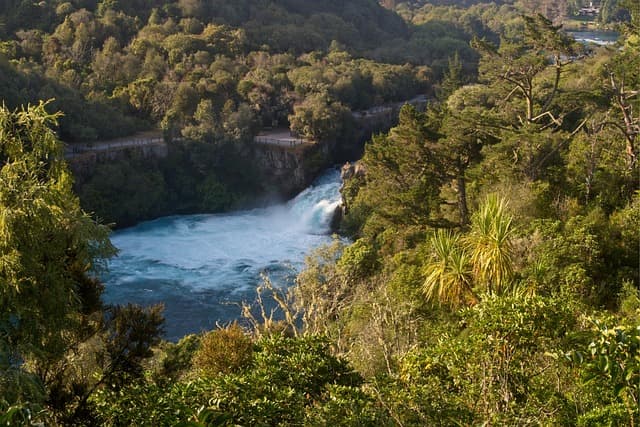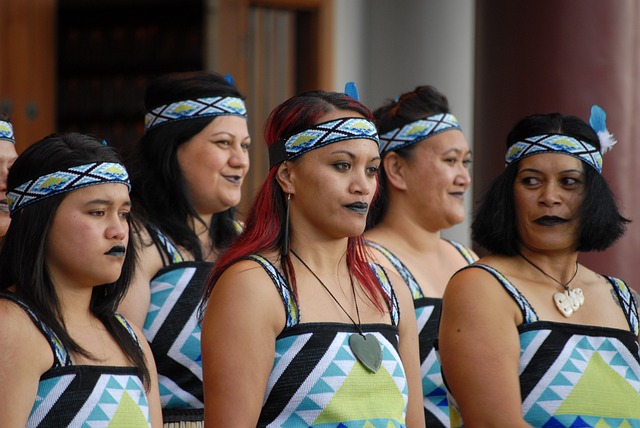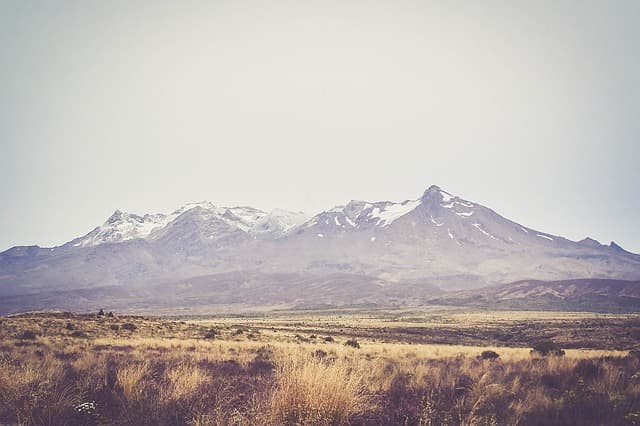Here comes Franz’s fellow glacier Fox Glacier. It is the largest on the territory of the Westland National Park and one of the largest glaciers in New Zealand. Fox Glacier is located about twenty-five kilometers south of Franz. A few kilometers from the glacier is Route 6 and there is a small town that bears the glacier’s name. It is Fox Glacier-town is completely oriented to the tourist business and the provision of all kinds of services. After all, the Fox Glacier, as well as its counterpart Franz, is a very popular place of tourist pilgrimage and the reason for this is the same easy accessibility. During the hottest period the little town, whose population is about four hundred (375), receives about a thousand visitors daily. But this number is probably not accurate, as many visitors without registration and without guides go to the glacier on their own, exposing themselves to serious danger. Walks to the glacier are organized from the town. The best view opens at the ninth kilometer of the path along the glacier, at sunset, on a cloudless day. But only from the air, by airplane or helicopter, you can feel all the splendor of the Fox Glacier and the mighty peaks of the Southern Alps. It is clear that not everyone can take advantage of this.
Seven kilometers west of the town in a beautiful forest, lurks as small as the town, but known throughout the country, the mirror lake Metison, travel to which is no less popular than the glacier itself.
History
Apparently, Fox Glacier, like its nearest neighbor Franz, was once part of a larger glacier that formed thirteen thousand years ago, during the last ice age, but then separated and became an independent glacier. Fox Glacier then reached the Tasman Sea, but gradually retreated, forming new landforms in the process, particularly Lake Matheson. The first inhabitants of these places were the Maori, and they gave the glacier its name. There is a legend that Fox Glacier, like Franz Glacier, is the glaciated tears of a desperate maiden, Hina Huketer, who grieved for her beloved Tu Awe. Te Moeka o Tu Awe-“Tu Awe’s bed”-or deathbed. That’s the Maori name for the glacier.
There is information that the first European to see the Fox Glacier was a young Leonard Harper. He visited the glacier in 1852 and even called it “Albert”. But this name did not survive, as Harper did not register his discovery. In 1865, gold was discovered in the area of the glacier and throngs of prospectors flocked here. A settlement of 600 people sprang up on the site of the present town of Fox Glacier. But the gold rush passed quickly and the area was deserted. It was remembered a little later. In 1872, the Fox Glacier was visited by the country’s Prime Minister William Fox, and the glacier was named after him. From that time, probably, the glory of the world-famous glacier began. In 1998, after the adoption of the law on settlement of claims of the Ngai Tahu tribe, the glacier changed its European name and became officially called Te Moeka Tuawe.
Glacier
Beginning its journey at 2,600 meters above sea level, the Fox Glacier descends towards the coast and stops at three hundred meters, creating a spectacular contrast with the tropical greenery of the rainforest. Fox is larger than its neighbor Franz, as it is thirteen kilometers long. It is fed by snowfall, which forms an approximately thirty kilometer annual layer at its headwaters. The huge area of snow accumulation at the top of the glacier is 36 square kilometers, which is larger than the area of all of Christchurch. The snow compacts, turning into ice. Over time, it accumulates hundreds of meters and this ice under pressure rolls down the glacier bed into the wet forest, where it is warmer and rains, being another three hundred meters thick. This can be compared to the effect of toothpaste squeezed out of a tube. The speed of the ice flow is ten times faster than other glaciers, so the landscape of the ice sheet is constantly changing. The action occurs because of the particular shape of the glacial valley and the large accumulation of snow and ice at the top. As it moves, the ice breaks, forming deep gorges and creating a very beautiful but also very dangerous landscape. Downstream, the Fox Glacier is melting, feeding the Fox River with its meltwater. It has been melting for the last hundred years. In addition, the melting of the glacier is also affected by global warming. In 2006, the glacier was retreating one meter per week.




